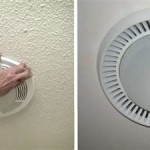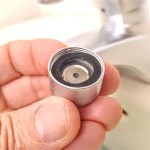Removing Silicone From Bathroom Tiles: A Comprehensive Guide
Silicone sealant is a common material used in bathrooms to create waterproof barriers around fixtures such as bathtubs, showers, sinks, and toilets. Its flexibility and resistance to water make it ideal for these applications. However, over time, silicone can become discolored, cracked, or even moldy, requiring its removal and replacement. Removing old silicone from bathroom tiles can be a challenging task, often requiring patience and the right tools and techniques. This article provides a comprehensive guide to effectively remove silicone sealant from bathroom tiles without damaging the underlying surfaces.
Before initiating the removal process, it is crucial to understand the type of sealant being removed. Most bathroom sealants are silicone-based due to their water-resistant properties. However, other types, such as acrylic caulk, might also be present. While the methods outlined here are generally effective for silicone, identifying the specific sealant helps tailor the approach and choose the most appropriate solvents or tools. Attempting to remove silicone without proper preparation can lead to frustration and potential damage to the tiles.
Key Point 1: Preparation and Safety Measures
Prior to commencing the silicone removal process, thorough preparation is essential. This involves gathering the necessary tools and implementing safety measures to protect both the user and the bathroom surfaces. The tools typically required include a sharp utility knife or specialized sealant removal tool, a heat gun or hairdryer, a plastic scraper, a solvent (such as mineral spirits, isopropyl alcohol, or a commercial silicone remover), soft cloths or paper towels, and protective gear.
Safety should always be a primary concern. Wearing safety glasses protects the eyes from flying debris or accidental splashes of solvent. Gloves made of nitrile or rubber protect the skin from irritation caused by solvents and prevent cuts from sharp tools. Adequate ventilation is also crucial, especially when using solvents, as their vapors can be harmful. Opening windows or using a fan can ensure proper airflow in the bathroom.
Preparing the work area involves protecting surrounding surfaces. Applying painter’s tape around the edges of the tiles adjacent to the silicone sealant can prevent accidental scratches or damage during the scraping process. Covering nearby fixtures, such as sinks and toilets, with drop cloths protects them from solvent splashes or falling debris. A clean and well-prepared work area streamlines the removal process and minimizes the risk of damage.
Key Point 2: The Removal Process: Cutting and Scraping
The first step in removing silicone sealant involves carefully cutting through the sealant along both edges where it meets the tile surface. Employing a sharp utility knife or a specialized sealant removal tool is recommended. The goal is to sever the bond between the sealant and the tile without scoring or damaging the tile surface. Applying consistent and even pressure ensures a clean cut. Several passes may be required, especially if the sealant is thick or hardened.
Once the sealant is cut, the next step involves scraping it away from the tile. A plastic scraper is preferred over metal scrapers as it is less likely to scratch the tile surface. Start by inserting the scraper under the edge of the cut sealant and gently prying it away from the tile. Work slowly and methodically, applying steady pressure to lift the sealant. For tougher sections, a heat gun or hairdryer can be used to soften the silicone, making it easier to remove. Applying heat for a few seconds softens the sealant, allowing easier separation from the tile.
In some instances, the sealant may be deeply embedded or stubbornly adhered to the tile. In such cases, a solvent can be applied to help loosen the bond. Apply a small amount of solvent to a cloth or paper towel and gently rub it onto the remaining sealant. Allow the solvent to sit for a few minutes to penetrate the sealant before attempting to scrape again. Repeat the process as needed, being careful not to saturate the surrounding grout or tile with the solvent. Consistent effort and patience are key to successfully removing the sealant without damaging the underlying surface.
Key Point 3: Cleaning and Residue Removal
After removing the bulk of the silicone sealant, a residue often remains on the tile surface. This residue can be difficult to remove and may require additional cleaning steps. The primary method for removing residue involves using a solvent specifically designed for silicone removal. Mineral spirits, isopropyl alcohol, or commercial silicone removers are commonly used and can be found at most hardware stores.
To remove the residue, dampen a clean cloth or paper towel with the chosen solvent. Gently rub the affected areas of the tile, applying moderate pressure. Allowing the solvent to sit on the residue for a few minutes before wiping can help dissolve the remaining sealant. Ensure the solvent does not remain on the tile for an extended period, as it could potentially damage certain tile types or grout.
For stubborn residue, a more abrasive approach may be needed. A non-scratching scouring pad, combined with the solvent, can help remove the remaining sealant. Gently scrub the affected area using circular motions. Avoid applying excessive pressure, as this can scratch the tile surface. Regularly rinsing the scouring pad with clean water helps prevent the removed silicone from being reapplied to the tile.
Once the residue is removed, thoroughly clean the tile surface with soap and water to remove any remaining solvent. This ensures a clean and dry surface for the application of new sealant. Inspect the tiles for any remaining residue or damage before proceeding. If any damage is present, address it before applying new sealant to prevent future water damage or leaks. A clean and well-prepared surface ensures optimal adhesion and longevity of the new sealant.
Furthermore, it is crucial to address any mold or mildew that may have grown beneath the old silicone. Clean the area thoroughly with a mold and mildew remover before applying new sealant. This prevents the mold from recurring and compromising the integrity of the new seal. Allowing the area to dry completely before applying new sealant is essential for optimal adhesion and preventing moisture entrapment.
In summary, removing silicone from bathroom tiles requires careful preparation, the right tools, and a methodical approach. Cutting and scraping the sealant, followed by thorough cleaning and residue removal, are essential steps in the process. By following these guidelines, individuals can effectively remove old silicone and prepare the surface for new sealant, ensuring a watertight and aesthetically pleasing bathroom.
How To Remove Silicone Sealant From Tile Glass Metal And Wood

How To Remove Silicone Sealant Checkatrade

How To Remove Bathroom Sealant Sanctuary Bathrooms

Daqiq Chimie Co How To Remove Silicone Sealant

How To Remove Silicone Around Your Home Cleanipedia Au

How To Remove Silicone Caulk The Best Tricks

How To Remove Replace Silicone Sealant Tile Mountain
How To Remove And Replace Silicone Sealant

Caulk 101 Cleaning And Maintenance The Grout Experts
Bathroom Renovation Removing Silicone Sealant With A Multitool Harry Rufus
Related Posts







